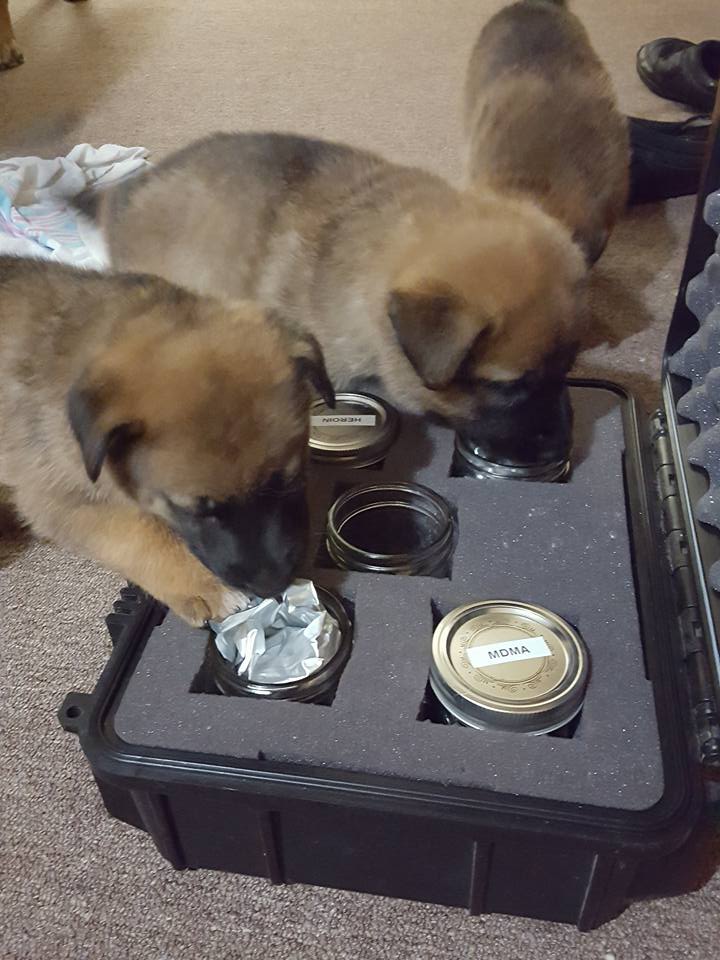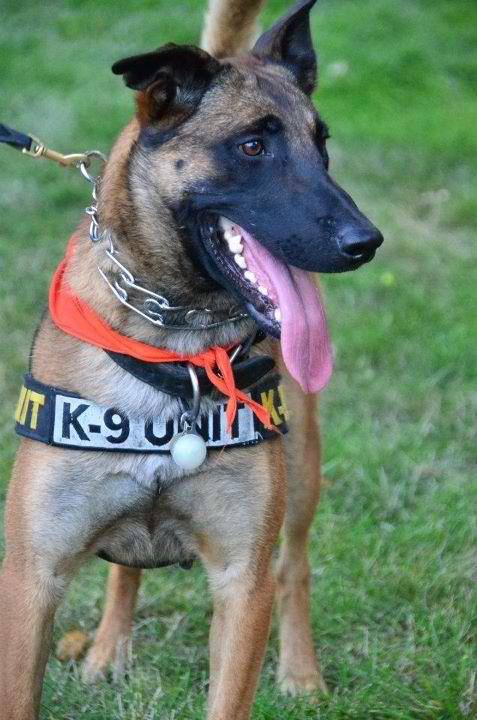On Friday, Oct. 6, the body of a man was discovered buried in the backyard of a Bushwick home on Himrod Street and Evergreen Avenue. The hero credited with the discovery of the corpse? A police cadaver-sniffing dog. After an anonymous tip, the dog, part of the NYPD K9 Unit, led detectives to a shallow grave in the corner of the backyard, according to the Daily News. Without this important member of the NYPD, officers could have spent hours scouring that backyard for evidence.
Meanwhile, the scenario led us to another question: How do dogs become police dogs? How are they trained?
To get some answers, the Brooklyn Ink turned to Jay Adams, a private contractor and founder of Adams Police K9. He has been training police dogs for more than 17 years. Some of his training for police dogs include narcotics detection, crowd and riot control, building searches, and personal protection, as well as emergency response activities for natural disasters.
For starters, Adams says, you have to start with the right dog. One part of the selection process includes observing the personality traits . For dogs that are nine to eleven months old, Adams will sometimes stare directly at a dog to see what his or her response will be. A dog’s reaction to the stare-down can determine if it is a good fit. “If you start staring them down, I expect a dog to immediately, immediately go into a bark zone and saying ‘Hey buddy I’m going to take you down if you come any closer’,” Adams said. This response can show dominance, a trait highly valued in a dog joining a K9 unit.

As Adams explains it, one of the first steps for making a dog suitable to join a K9 unit is teaching them to avoid distractions, like sounds. If you’re starting out with puppies you have to expose them to lots of noise to build up their tolerance, he said, so they will not get spooked in the field. “We take them to the firing range, where there is lots of trap shooting. Let them walk around and the puppies are already adjusting to the loud noises,” Adams said.
The police dog that discovered the body in Bushwick was a cadaver-sniffing dog. How do you train for that? To help dogs hone in on smells associated with a corpse, Adams uses mason jars that contain fingernail clippings, urine, even already severed body parts like a finger, which he obtains as a donation from medical universities. Some jars are filled with soil, water, and sand to help throw off their scent. The mason jars are placed in what is called an odor box and the dogs must sniff around the odor box. Every time the dog scratches or barks at a jar containing a human trace, they are instantly rewarded with a treat. “The odors are horrific. I can’t even begin to describe how horrible the smells are,” Adams said.
Training cadaver dogs can be challenging, especially since a dog’s ability to pinpoint a smell is significantly more accurate than humans. Thus, training for these dogs must be within a contained environment, so their noses are not distracted. “You don’t want to train a cadaver dog in a cemetery or in like an old war ground area because the blood seeps through the trees and believe it or not, the dog will still hit on it. Even from the Civil War; it is that intense for them,” Adams said.
On average these dogs can be trained in three months according to Adams. But with his expertise and experience, he says he can get a dog K9 unit-ready within as little as two weeks.
“Three percent of any breed can work but only three perecent. One percent will go on to work with SWAT and special forces,” Adams said. According to the Daily News there are more than a hundred police dogs serving in different NYPD agencies. Also, more than 100 dogs work in the Transit Bureau, narcotics, the bomb squad, and Emergency Service Unit.
K9 units are highly trained additions to police forces and one dog’s training was on full display in Bushwick on Oct. 6. Timoshenko, a German Shepard, is the police dog that made the grim discovery. He is named after Russell Timoshenko, an NYPD officer who was killed in the line of duty on July 9, 2007, during a traffic stop.


Leave a Reply